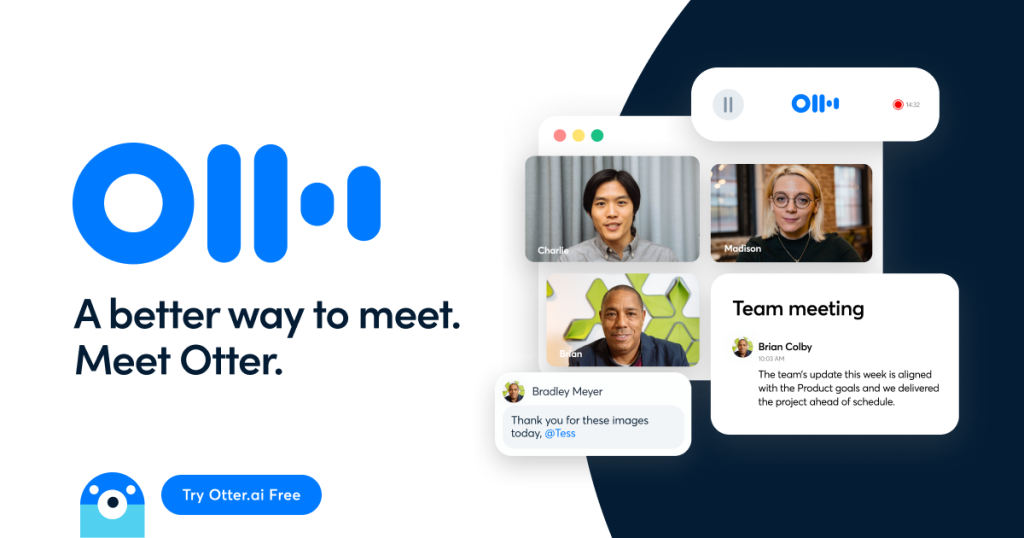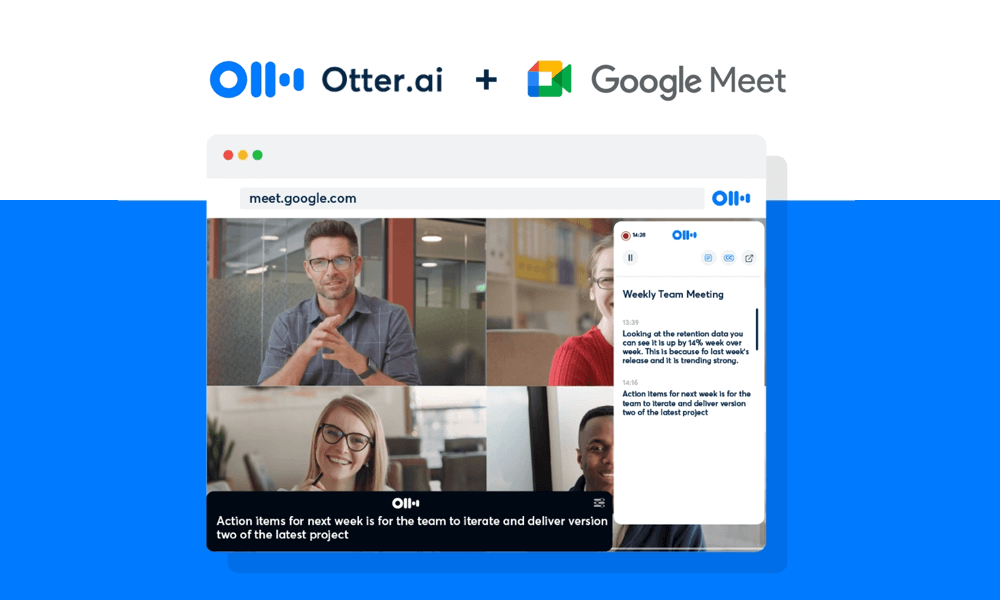Technology
Otter: Overview – Otter Quality, Benefits, Advantages And Features Of Otter And Its Experts Of Otter.
Otter is a powerful and innovative platform that provides voice meeting notes and real-time transcription services. The platform is designed to make it easier for users to capture, transcribe, and organize spoken content, making meetings and discussions more productive and accessible.

Otter Overview
Otter is a powerful and innovative platform that provides voice meeting notes and real-time transcription services. The platform is designed to make it easier for users to capture, transcribe, and organize spoken content, making meetings and discussions more productive and accessible.
Key features of Otter include:
- Real-time Transcription: Otter uses advanced speech recognition technology to provide real-time transcription of meetings, lectures, interviews, and other spoken content. As people speak, the platform transcribes the words into text, allowing participants to follow along and review the discussion later.
- Voice Meeting Notes: Otter generates interactive voice meeting notes that sync with the transcribed text. These notes capture the main points, action items, and important details from the conversation, making it easier for participants to refer back to key information.
- Speaker Identification: The platform can differentiate between different speakers, assigning labels to each person, which is particularly useful in multi-speaker settings or interviews. This feature helps users identify who said what during the conversation.
- Search and Highlight: Otter allows users to search for specific keywords or phrases within the transcriptions. When a keyword is found, the platform highlights the corresponding section, enabling quick and easy navigation through lengthy transcripts.
- Integration: Otter offers integrations with various platforms, including Zoom, Microsoft Teams, Google Meet, and Dropbox, making it seamless to capture and transcribe meetings held on these platforms.
- Collaboration: Users can share access to transcriptions and voice notes with team members or collaborators, promoting collaboration and knowledge sharing.
Otter Quality
- Audio Quality: The quality of the audio input plays a significant role in the accuracy of the transcription. Clear, well-recorded audio with minimal background noise and disturbances will generally result in more accurate transcriptions.
- Speech Clarity: The clarity of the speakers’ speech also affects transcription accuracy. Speaking clearly and enunciating words can help improve the results.
- Speaker Identification: In scenarios with multiple speakers, Otter ability to accurately identify each speaker can impact the overall quality of the transcription. When it successfully distinguishes speakers, it helps in providing a more organized and understandable output.
- Vocabulary and Context: The platform’s speech recognition system relies on language models and contextual understanding. Uncommon or specialized vocabulary might be more prone to errors, as the system might not have enough data to accurately interpret them.
- Customization: Otter offers some level of customization, allowing users to add custom terms and phrases relevant to their domain or industry. This can enhance accuracy in specific contexts.
- Improvement over Time: Otter employs machine learning algorithms, and it continuously learns from user interactions and data to improve its transcription accuracy over time.
- Free vs. Paid Plans: The quality of transcription may differ between the free and paid plans. Paid plans typically offer higher accuracy and additional features not available in the free version.

Otter Benefits, Advantages And Features
Benefits and Advantages:
- Real-Time Transcription: Otter provides real-time transcription during live meetings, allowing participants to follow along, take notes more efficiently, and refer back to discussions later.
- Improved Meeting Productivity: With Otter attendees can focus on the conversation rather than taking detailed notes. This leads to more engaged discussions and better meeting outcomes.
- Accessibility: The platform makes meetings and spoken content accessible to individuals with hearing impairments or those who might miss parts of the conversation.
- Time-Saving: Otter automates the transcription process, saving significant time compared to manual note-taking or transcription.
- Speaker Identification: The ability to differentiate between speakers helps in attributing comments and ideas to the correct individuals, improving clarity and context.
- Searchable Transcripts: Otter allows users to search for specific keywords or phrases within the transcriptions, making it easy to find relevant information quickly.
- Collaboration: Users can share transcriptions with others, promoting collaboration and knowledge sharing among team members.
- Integration: Otter integrates with popular communication platforms like Zoom, Microsoft Teams, and Google Meet, simplifying the transcription process during online meetings.
- Mobility: The mobile app enables users to access their transcriptions on the go, record conversations, and review notes from their smartphones or tablets.
- Customization: Users can add custom terms and phrases to improve transcription accuracy in domain-specific contexts, making it more adaptable to different industries.
Features:
- Real-Time Transcription: transcribes spoken content in real-time as participants talk.
- Voice Meeting Notes: The platform generates interactive voice meeting notes that sync with the transcribed text.
- Speaker Identification: Otter can differentiate between different speakers in a conversation and label them accordingly.
- Editing and Correction: Users can manually edit and correct the transcription to improve accuracy.
- Custom Vocabulary: The platform allows users to add custom vocabulary, making it better at understanding domain-specific terms.
- Search and Highlight: Otter enables users to search for specific keywords or phrases within the transcriptions and highlights the corresponding sections.
- Integration with Other Platforms: Otter integrates seamlessly with various communication and cloud storage platforms.
- Collaboration and Sharing: Users can share access to transcriptions with team members and collaborators.
- Data Security: Otter prioritizes data security and confidentiality in handling sensitive information.
- AI-Driven Improvements: The platform continuously learns from user interactions and data to enhance its transcription accuracy over time.

Experts Of Otter
- Otters are highly skilled swimmers, allowing them to easily navigate through water.
- They have a playful and social nature, making them enjoyable to observe in their natural habitat.
- Otters play a crucial role in maintaining the health of aquatic ecosystems by controlling fish populations.
- Their dense fur provides excellent insulation, enabling them to stay warm in cold water environments.
Otter Conclusion
In conclusion, Otter is a powerful and innovative platform that offers real-time transcription and voice meeting notes, providing numerous benefits and advantages for individuals and teams. Its features, such as speaker identification, searchable transcripts, and customization options, make it a valuable tool for various industries and use cases.
Otter significantly improves meeting productivity by automating the transcription process, allowing participants to focus on the conversation without worrying about taking detailed notes. The platform’s ability to differentiate between speakers enhances clarity and context, attributing comments to the correct individuals.
Furthermore, Otter promotes accessibility by making spoken content available to individuals with hearing impairments or those who might miss parts of the discussion. The mobile app extends its functionality to smartphones and tablets, ensuring users can access their transcriptions on the go.
The platform’s integration with popular communication platforms streamlines the transcription process during online meetings, while the option to add custom vocabulary makes it adaptable to different domains, improving transcription accuracy in specialized contexts.
